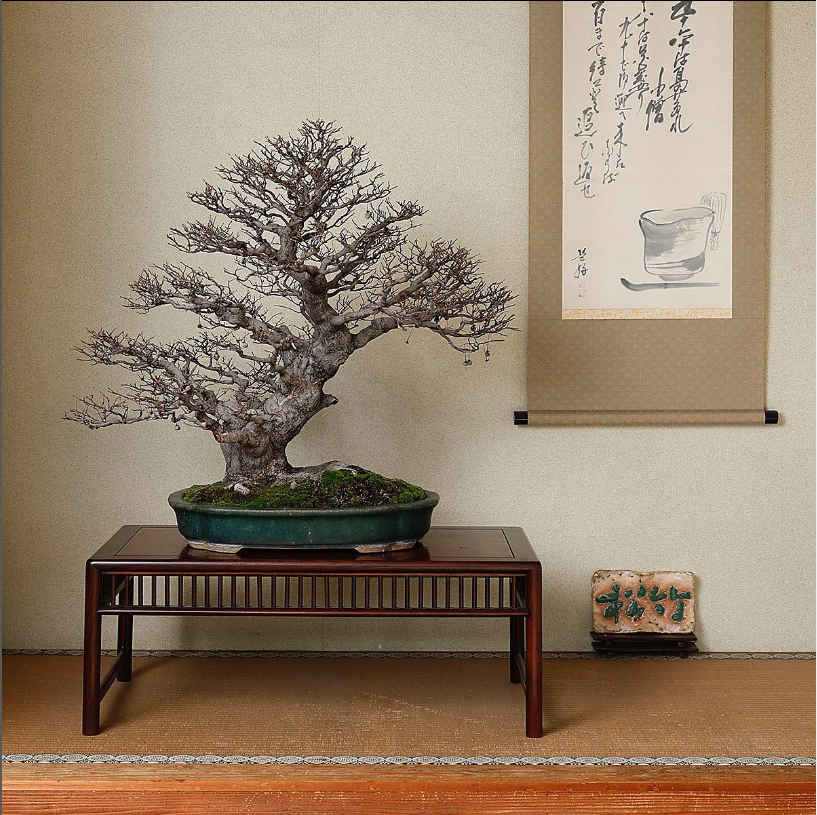The first mention of bonsai appears in Kamakura period ( 1192-1333) records of the Kasuga Shrine. An illustration of bonsai is seen in the famous picture scroll of the priest Honen of the same period. The illustration shows trees in their natural form planted in basins and displayed on a shelf. This clearly indicates that bonsai were being cultured for the purpose of appreciation at this time. ‘The picture scroll was produced during the Kamakura period, but it mainly illustrates life in the Heian period (794-1191), which means that bonsai probably existed even that long ago.
Various essavs written since the Kamakura period mention that trees and plants were gathered from the fields and mountains and made into bonsai.
A famous No play entitled Hachi-no-ki (plants in a pot), which deals with subjects of the same period, refers to plum, cherry, and pine as the trees planted in a pot.
This also is evidence that the appreciation of bonsai dates back some eight hundred years.
It is noted that during the Edo period (1615-1867), gardening and potted plants, especially flowering plants and species with colored leaves, were extremely popular and were developed greatly. The interest in bonsai, howerer, was apparently limited and showed very little prog-ress. However, with the heightening interest in Southern Sung-style painting and the popularity of literati art at the end of the Edo period,
bonsai also was frequently used as the subject matter for painting and poetry. On the other hand, however, oddly deformed trees were mistakenly considered as good bonsai, and the collection of these species became a fad for a short period. This tendency was soon corrected, and bonsai based on the expression of healthy, natural beauty was revived.
To cope with the growing interest in bonsai by the general public, the first nationwide bonsai exhibition was held in Tokyo in 1914. And in 1934, an annual exhibition emphasizing creative bonsai was initiated at the Tokyo Metropolitan Art Museum and is being continued even today.
Bonsai was once considered a leisurely hobby for the rich only. Now, however, it is accepted by the general public as an art, as well as a hobby, and has become particularly popular with people living in the crowded city areas, who otherwise have few direct contacts with nature.
Interest is also growing in the United States and other foreign con-tries, and requests from enthusiasts outside Japan for tools, equipment. and technical advice have greatly increased.

